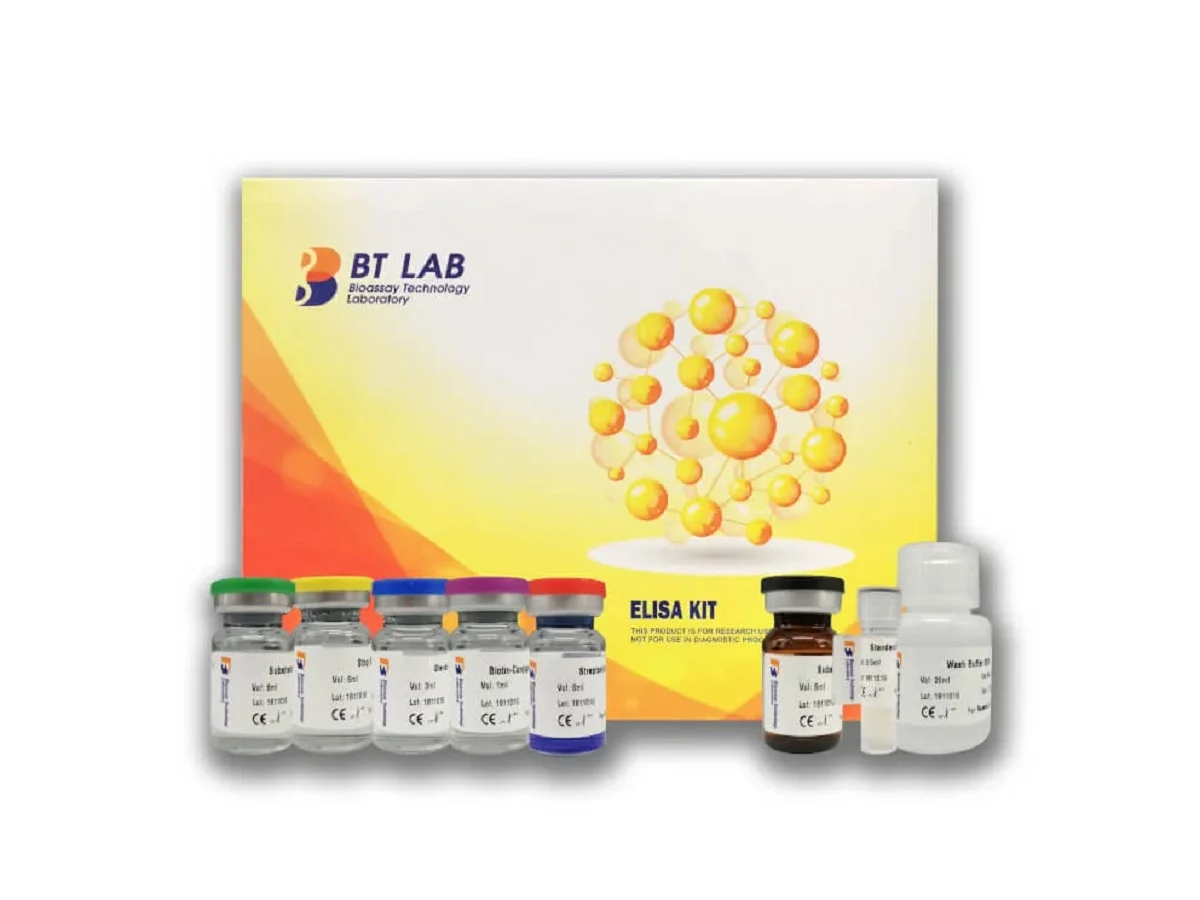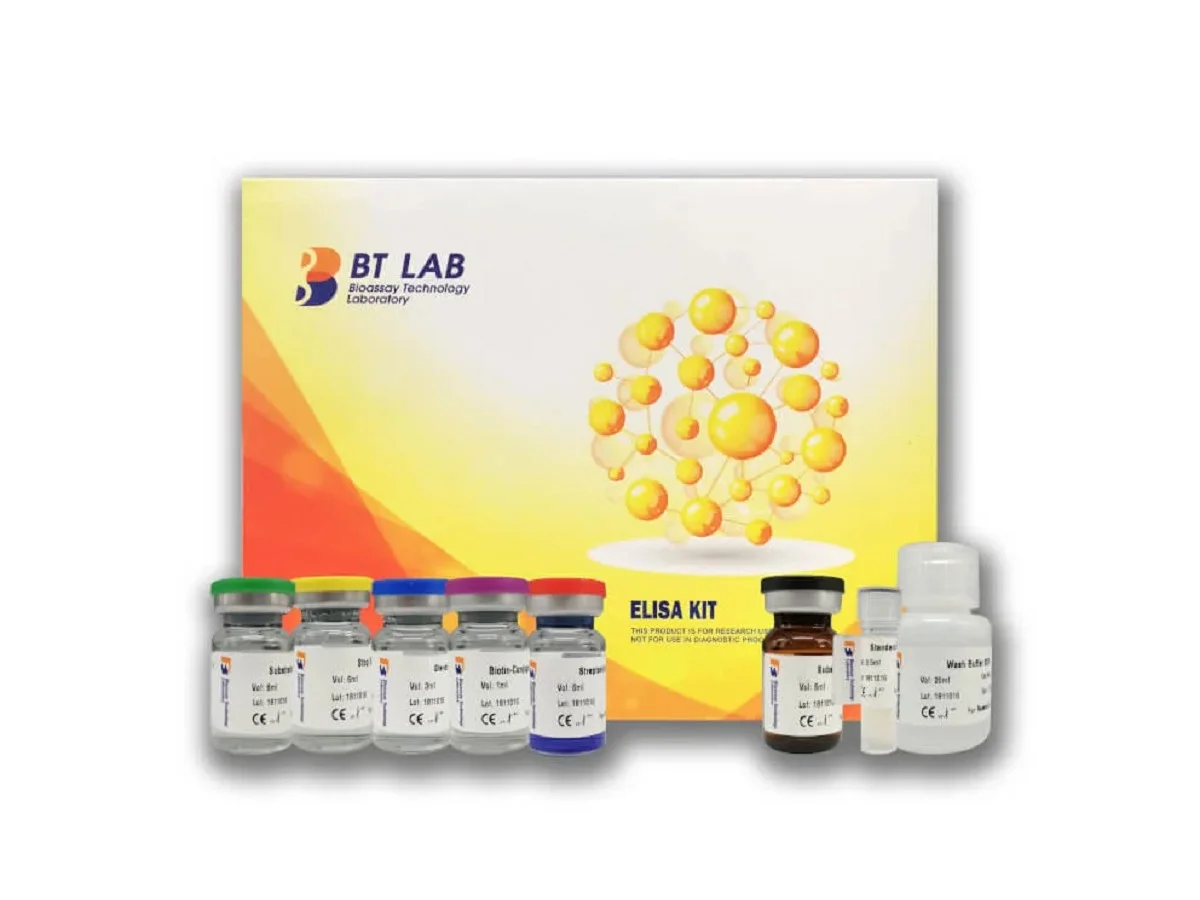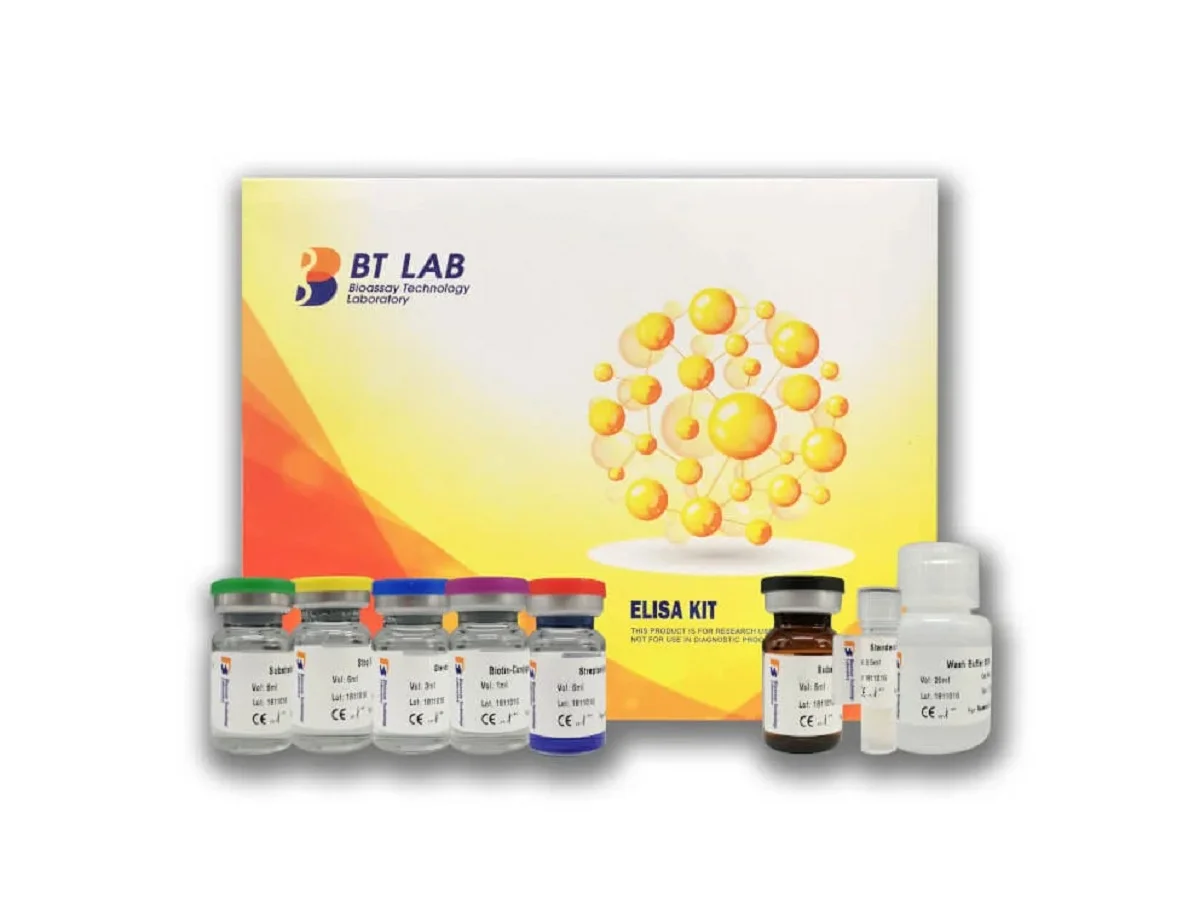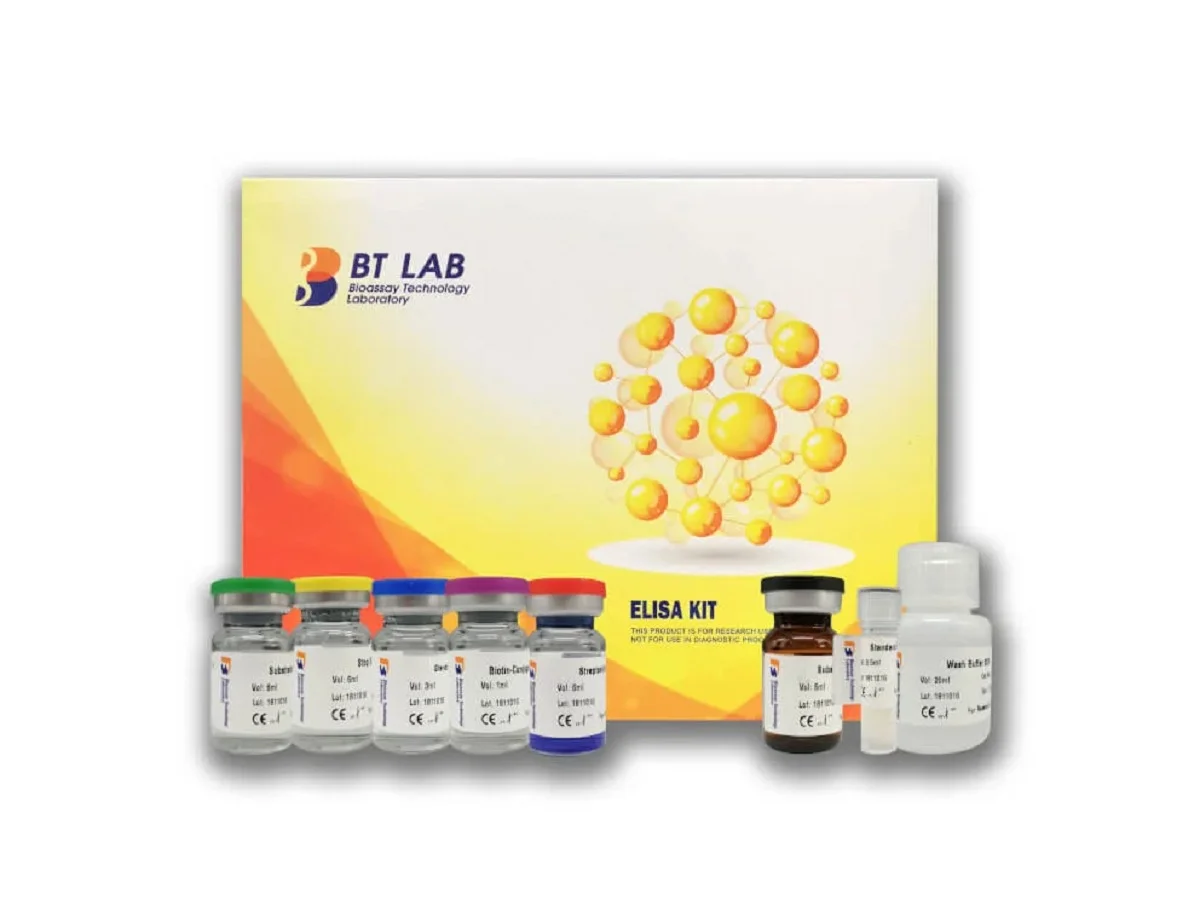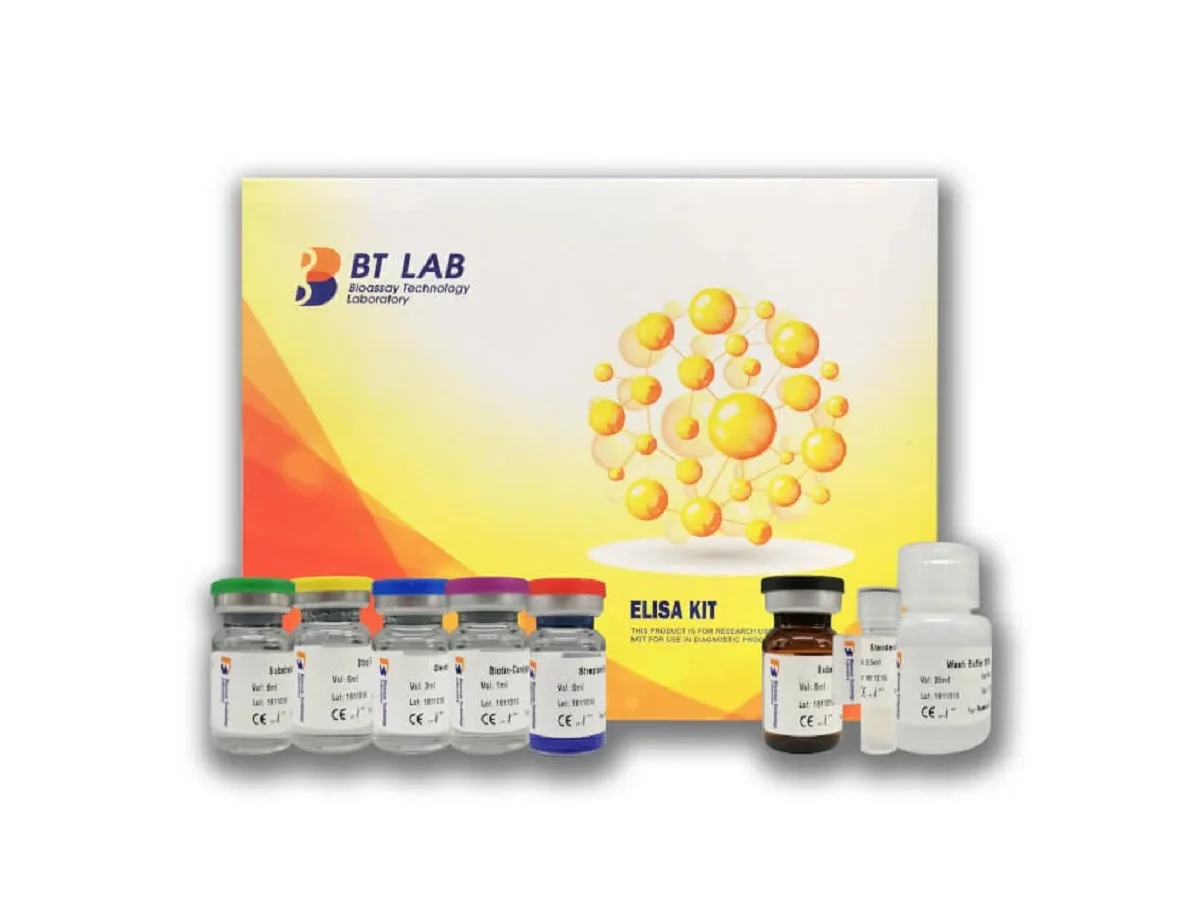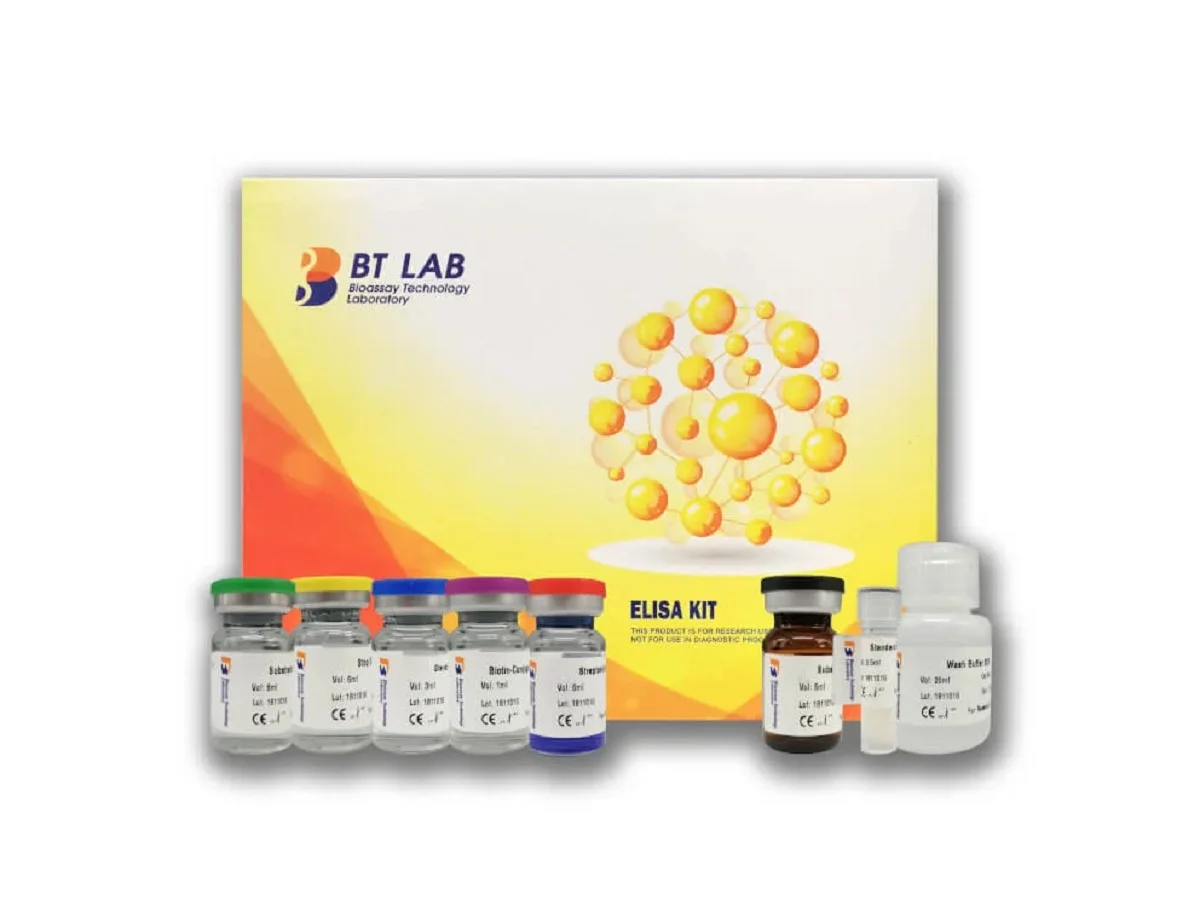BT Lab ELISA Kits
BT Lab ELISA Kits
Manufacturer: BT Lab
Participates in at least several B-cell activation processes as well as of other cell types (PubMed: 3016727). It is a costimulator of DNA-synthesis. It induces the expression of class II MHC molecules on resting B-cells. It enhances both secretion and cell surface expression of IgE and IgG1. It also regulates the expression of the low affinity Fc receptor for IgE (CD23) on both lymphocytes and monocytes. Positively regulates IL31RA expression in macrophages (By similarity). Stimulates autophagy in dendritic cells by interfering with mTORC1 signaling and through the induction of RUFY4 (By similarity).
Manufacturer: BT Lab
Pattern recognition receptor (PRR) located on the cell surface that participates in the activation of innate immunity and inflammatory response (PubMed: 11323673, PubMed: 18490781). Recognizes small molecular motifs named pathogen-associated molecular pattern (PAMPs) expressed by pathogens and microbe-associated molecular patterns (MAMPs) usually expressed by resident microbiota (PubMed: 29934223). Upon ligand binding such as bacterial flagellins, recruits intracellular adapter proteins MYD88 and TRIF leading to NF-kappa-B activation, cytokine secretion and induction of the inflammatory response (PubMed: 20855887, PubMed: 11489966). Plays thereby an important role in the relationship between the intestinal epithelium and enteric microbes and contributes to the gut microbiota composition throughout life (By similarity).
Manufacturer: BT Lab
This Sandwich kit is for the accurate quantitative detection of Human High Mobility Group Protein B1 (also known as HMGB1) in serum, plasma, cell culture supernatants, Ascites, tissue homogenates or other biological fluids.
Manufacturer: BT Lab
Catalyzes the oxidation of the less abundant 1,2-dihydro-beta-NAD(P) and 1,6-dihydro-beta-NAD(P) to form beta-NAD(P)(+). The enzyme hormone is secreted by the kidney, and circulates in blood and modulates cardiac function and systemic blood pressure. Lowers blood pressure in vivo by decreasing cardiac contractility and heart rate and preventing a compensatory increase in peripheral vascular tone, suggesting a causal link to the increased plasma catecholamine and heightened cardiovascular risk. High concentrations of catecholamines activate plasma renalase and promotes its secretion and synthesis.
Manufacturer: BT Lab
Binds to the C-terminal propeptide of type I procollagen and enhances procollagen C-proteinase activity. C-terminal processed part of PCPE (CT-PCPE) may have an metalloproteinase inhibitory activity.
Manufacturer: BT Lab
Motor protein that converts auditory stimuli to length changes in outer hair cells and mediates sound amplification in the mammalian hearing organ. Prestin is a bidirectional voltage-to-force converter, it can operate at microsecond rates. It uses cytoplasmic anions as extrinsic voltage sensors, probably chloride and bicarbonate. After binding to a site with millimolar affinity, these anions are translocated across the membrane in response to changes in the transmembrane voltage. They move towards the extracellular surface following hyperpolarization, and towards the cytoplasmic side in response to depolarization. As a consequence, this translocation triggers conformational changes in the protein that ultimately alter its surface area in the plane of the plasma membrane. The area decreases when the anion is near the cytoplasmic face of the membrane (short state), and increases when the ion has crossed the membrane to the outer surface (long state). So, it acts as an incomplete transporter. It swings anions across the membrane, but does not allow these anions to dissociate and escape to the extracellular space. Salicylate, an inhibitor of outer hair cell motility, acts as competitive antagonist at the prestin anion-binding site (By similarity).
Manufacturer: BT Lab
Major immune regulatory cytokine that acts on many cells of the immune system where it has profound anti-inflammatory functions, limiting excessive tissue disruption caused by inflammation. Mechanistically, IL10 binds to its heterotetrameric receptor comprising IL10RA and IL10RB leading to JAK1 and STAT2-mediated phosphorylation of STAT3. In turn, STAT3 translocates to the nucleus where it drives expression of anti-inflammatory mediators. Targets antigen-presenting cells (APCs) such as macrophages and monocytes and inhibits their release of pro-inflammatory cytokines including granulocyte-macrophage colony-stimulating factor /GM-CSF, granulocyte colony-stimulating factor/G-CSF, IL-1 alpha, IL-1 beta, IL-6, IL-8 and TNF-alpha. Interferes also with antigen presentation by reducing the expression of MHC-class II and co-stimulatory molecules, thereby inhibiting their ability to induce T cell activation (By similarity). In addition, controls the inflammatory response of macrophages by reprogramming essential metabolic pathways including mTOR signaling (By similarity).
Manufacturer: BT Lab
Catalyzes the condensation of nicotinamide with 5-phosphoribosyl-1-pyrophosphate to yield nicotinamide mononucleotide, an intermediate in the biosynthesis of NAD. It is the rate limiting component in the mammalian NAD biosynthesis pathway. The secreted form behaves both as a cytokine with immunomodulating properties and an adipokine with anti-diabetic properties, it has no enzymatic activity, partly because of lack of activation by ATP, which has a low level in extracellular space and plasma. Plays a role in the modulation of circadian clock function. NAMPT-dependent oscillatory production of NAD regulates oscillation of clock target gene expression by releasing the core clock component: CLOCK-ARNTL/BMAL1 heterodimer from NAD-dependent SIRT1-mediated suppression (By similarity).
Manufacturer: BT Lab
This kit is an Enzyme-Linked Immunosorbent Assay (ELISA). The plate has been pre-coated with Human GDNF antibody. GDNF present in the sample is added and binds to antibodies coated on the wells. And then biotinylated Human GDNF Antibody is added and binds to GDNF in the sample. Then Streptavidin-HRP is added and binds to the Biotinylated GDNF antibody. After incubation unbound Streptavidin-HRP is washed away during a washing step. Substrate solution is then added and color develops in proportion to the amount of Human GDNF



